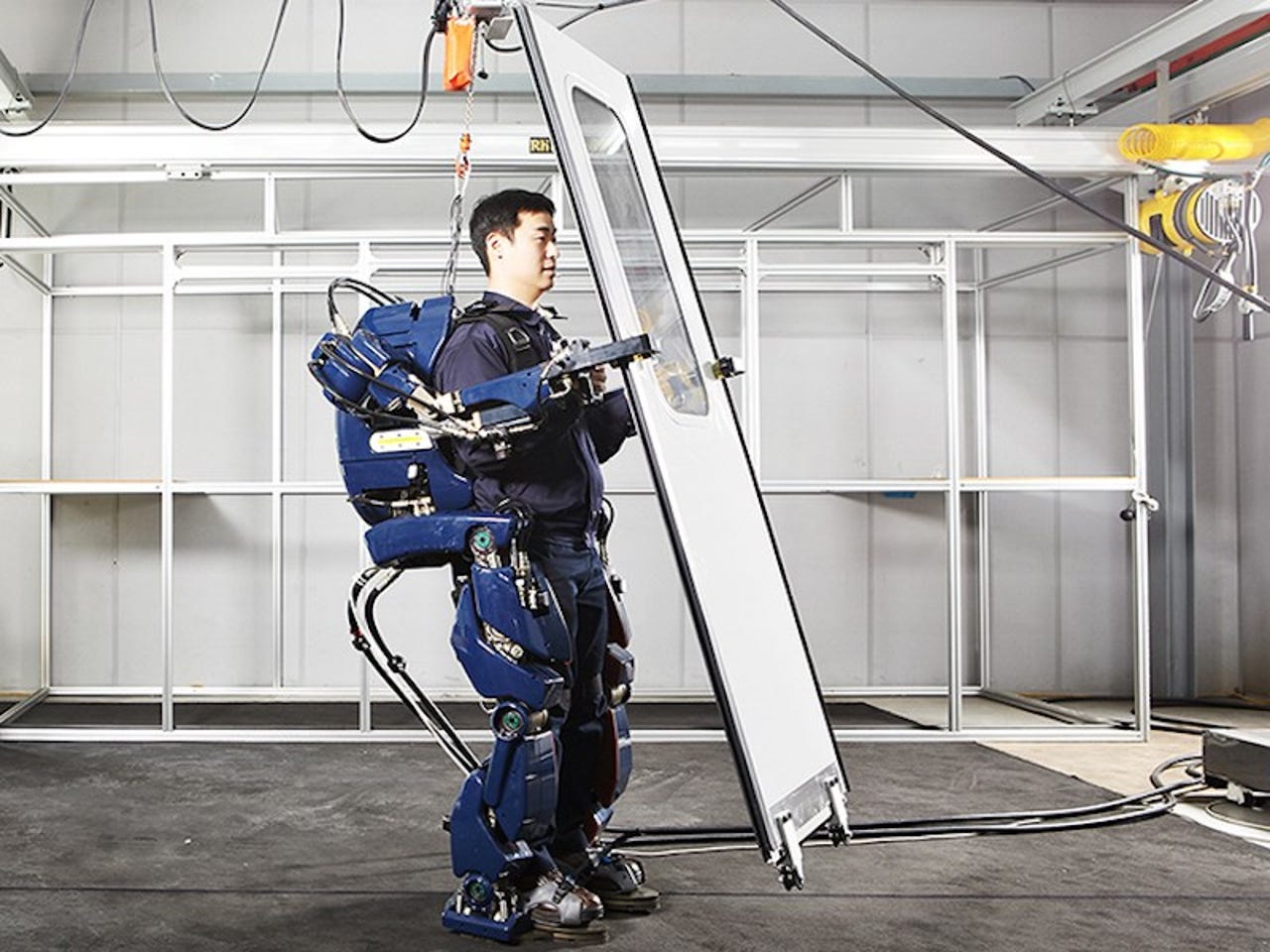Prediction: You'll see a whole bunch of people wearing robots at work in 2018


It's been a long, rocky road for powered robotic exoskeletons ... most of which are still incapable of walking down long and rocky roads.
But exoskeleton markets are set to reach $2.8 billion by 2023, up from $299.8 million in 2017, according to a global forecast by ReportsnReports.
That's an enormous spike -- and I'd guess a slightly inflated one. But the signs are hard to ignore: Exoskeleton technology is market-ready, and a variety of industries are looking seriously at adopting the technology.
First some history. The early promise of powered exoskeletons, which developed predominantly in grad school labs in the 1990s and early-2000s, was mobility.
As recently as four years ago I had conversations with the leadership team at Ekso Bionics, one of the early startups to bring the technology to market, about mobility-impaired individuals wearing slim robotic exoskeletons under their clothes and walking onto airplanes or strolling into restaurants, no one the wiser. The timeline was five years -- a projection that isn't going to pan out.
The stumbling blocks have been in part technological. Bipedal gait is extraordinarily complex, and it's risky to put a human in a machine that could keel over in all but the most controlled environments. That's especially true if the user in question has a mobility impairment.
But a bigger problem, it turns out, is that the wheelchair is an incredibly durable piece of technology. They're relatively cheap and, at least in countries that legislate equal access for persons with disabilities, extremely effective at delivering on what they're designed to do: Restore mobility.
That realization caused some turmoil and ultimately a pivot in the industry as companies like Ekso, Rewalk, Cyberdyne, and Bionik shifted aim to the healthcare sector, where exos are currently used for robotic rehabilitation. After stroke or spinal cord injury, patients at exoskeleton-equipped rehab clinics can use the assistive devices for gait training or to reduce secondary complications associated with sitting in a wheelchair all day.
The mobility dream hasn't died; it's more accurate to say it's been punted further down the road by most of the companies in the space. There are exceptions. French company Wandercraft is still targeting mobility for its powered exoskeleton. The company says its suits reliably reproduce the human gait, which has long been an elusive engineering challenge.
But the long-hoped-for growth in exoskeleton markets will only happen as they find their way into industrial sectors like construction and ship building. Now it looks like that's poised to happen, and soon -- likely in the next year.
Most major developers of powered exoskeleton suits have now adapted technology originally conceived for mobility to industrial applications. Lockheed, Ekso, Mitsubishi Heavy Industries, Daewoo, Honda, Hyundai, and Toyota are all at work on industrial exos to help workers lift heavy loads or reduce strain from repetitive tasks.
North America held the largest share of the exoskeleton market in 2016, and North American companies should be the biggest players in the next year. I recently wrote about Utah-based Sarcos, which developed one of the first powered exoskeletons under a DARPA grant in the early 2000s.
Robotics
Sarcos is now bringing two exoskeletons to market that I think have a good shot at being the first blockbuster powered industrial exoskeletons, the Guardian GT and the Guardian XO. One is a proper exoskeleton suit, the other a tele-operated robot suitable for remote operation in places like nuclear reactors.
But Asia-Pacific companies are closing in. In large part that's because Asian tech giants like Mistubishi, Daewoo, and Honda do a little bit of everything, including building things like power plants and ships. That's incentivized them to develop industrial exoskeletons, which they can deploy and refine in-house.
On a slightly longer timescale, military applications will be another huge driver in the market. If that's a scary thought, take a little heart that the biggest value of robot-augmented humans for the military, at least in the next decade, will be in logistical support, things like loading and unloading munitions and setting up bases.
I'll be following the spread of robotic exoskeletons closely in 2018. It should be a big year for a technology that's second only to flying cars for being long-promised and a heck-of-a-long-time coming.